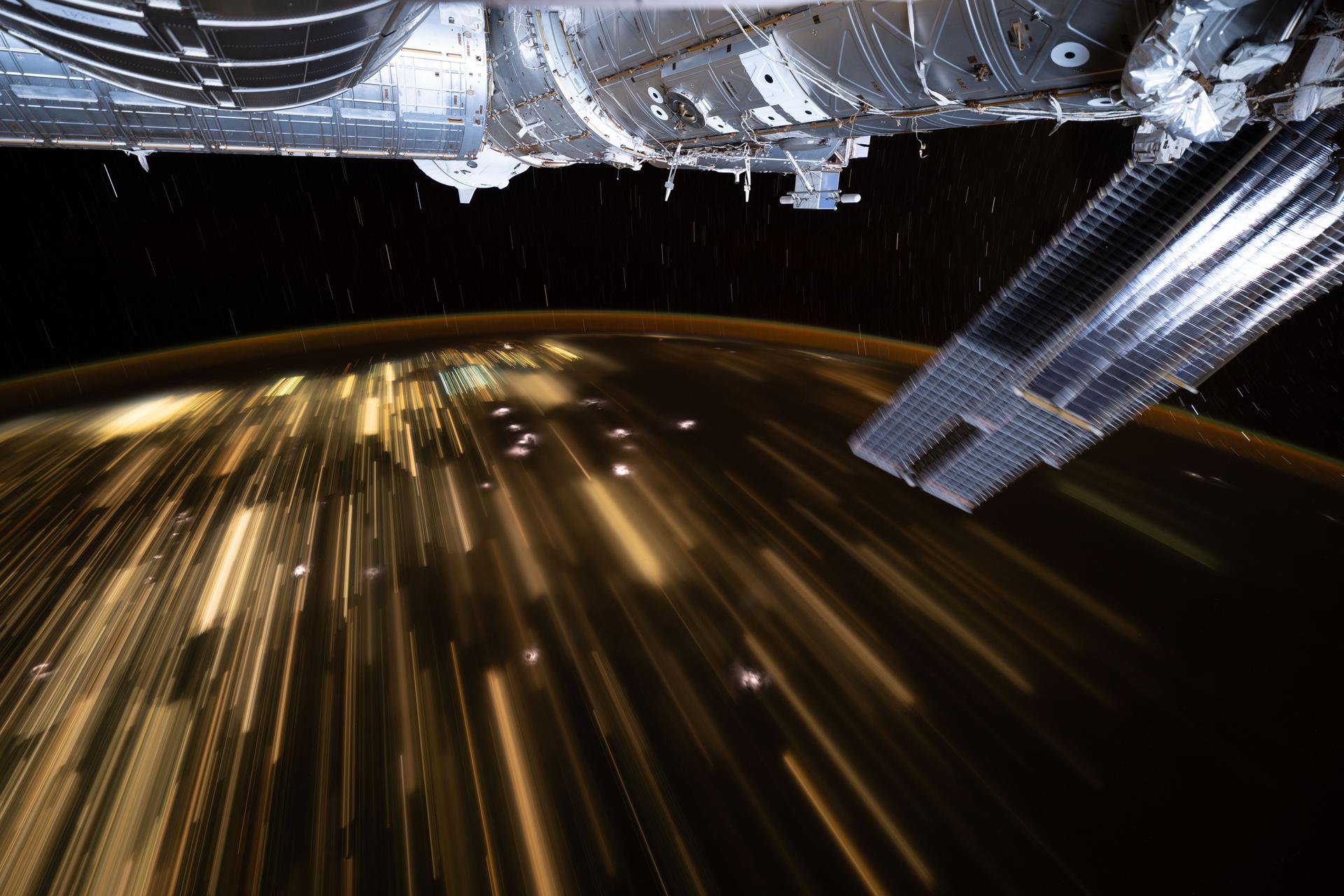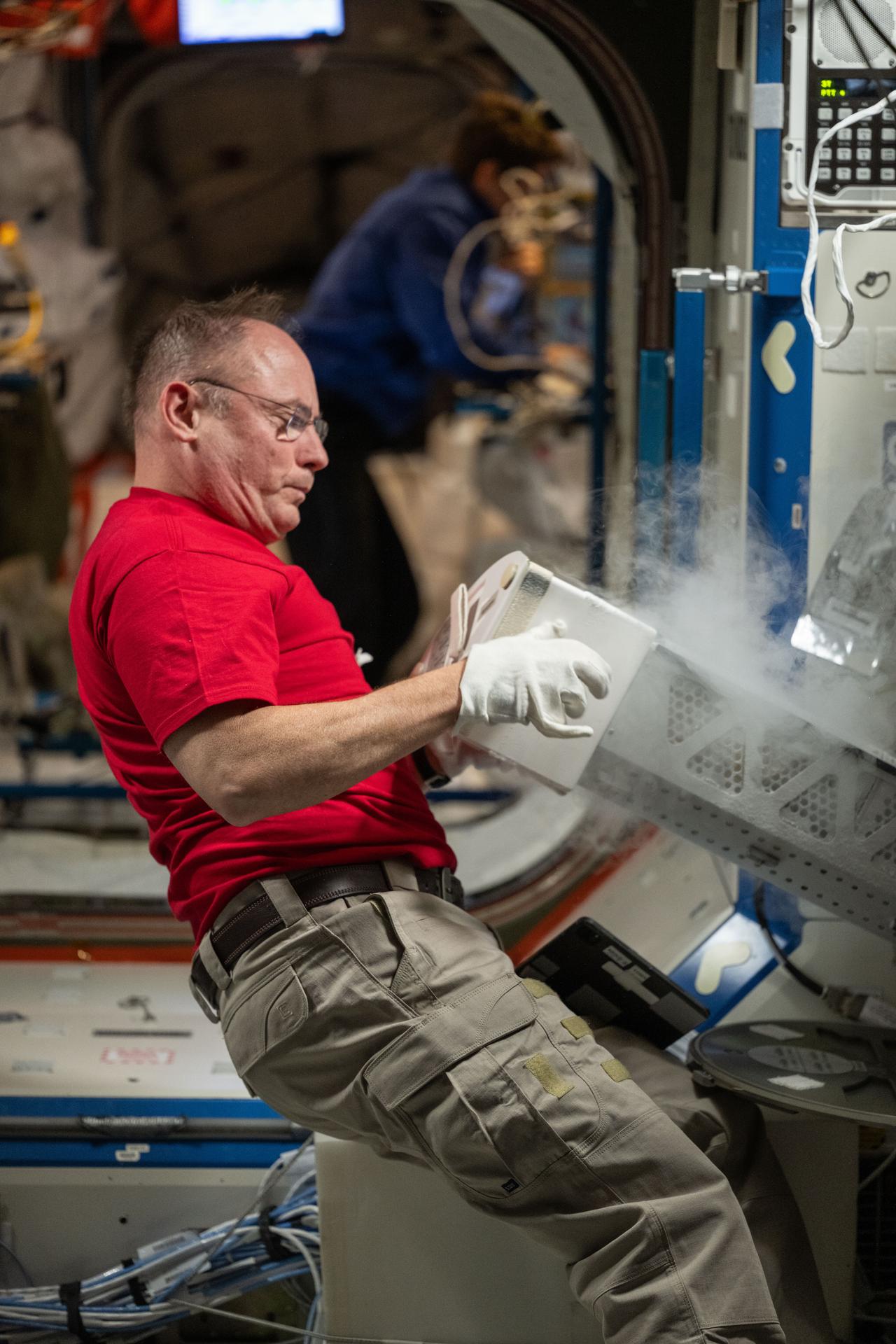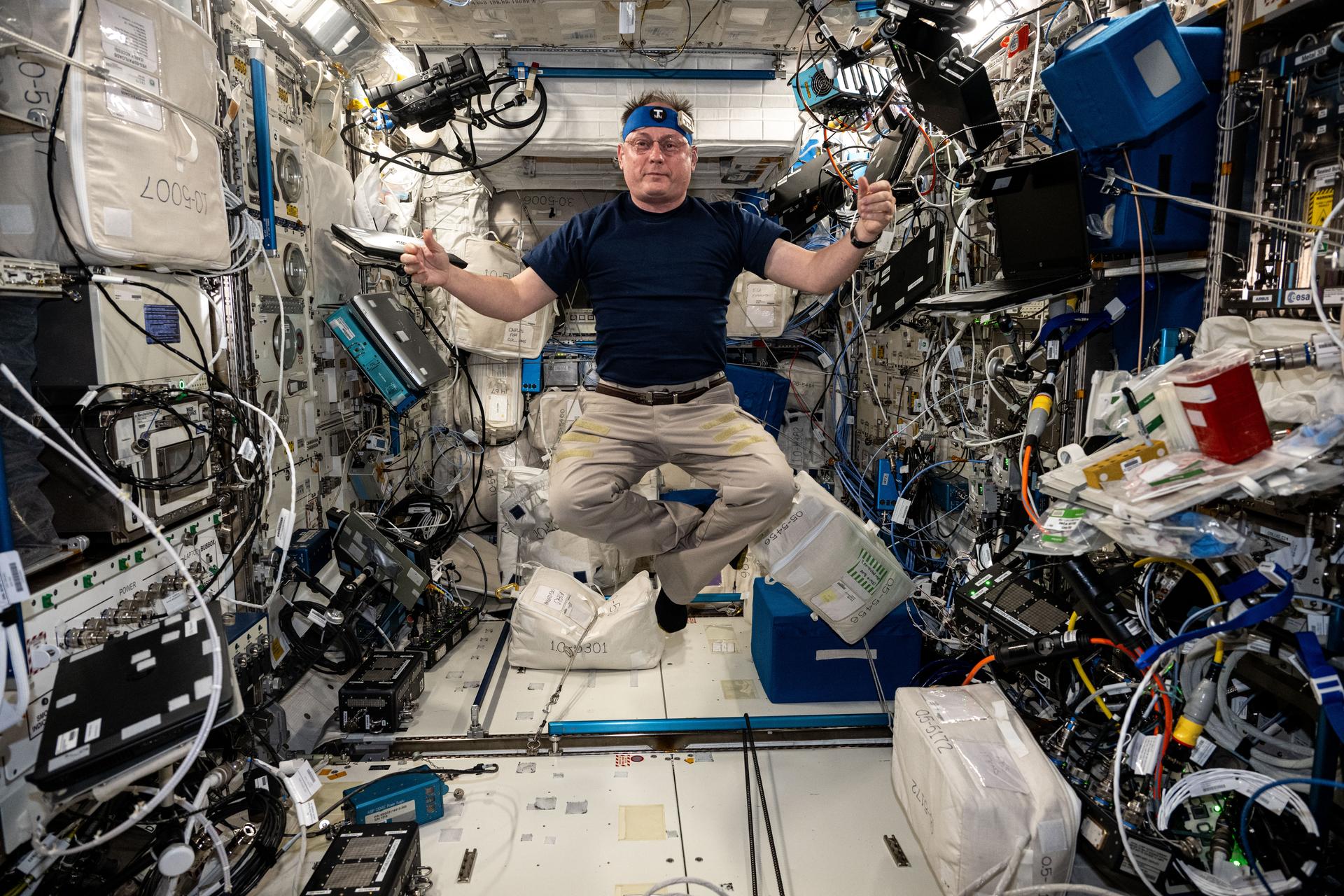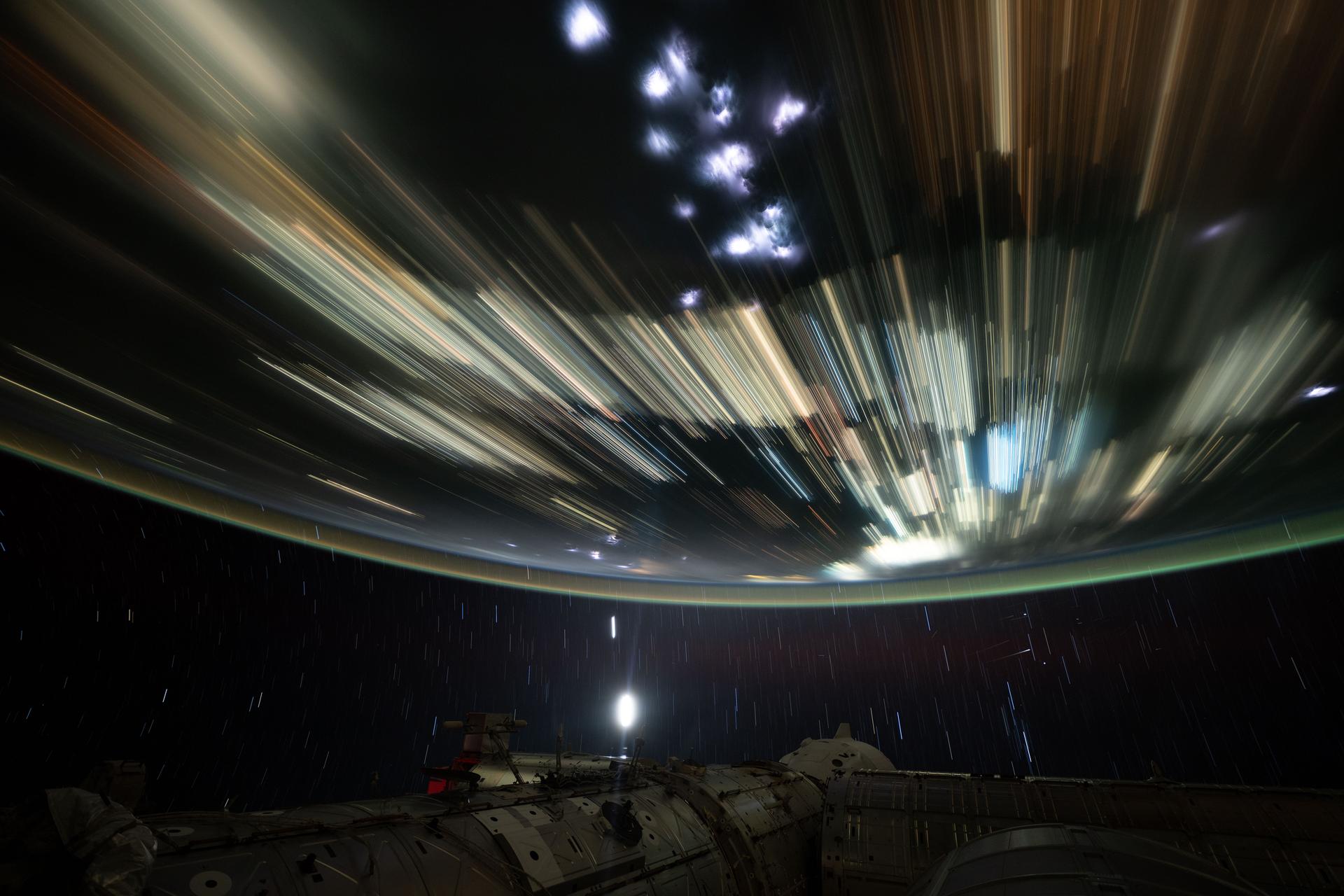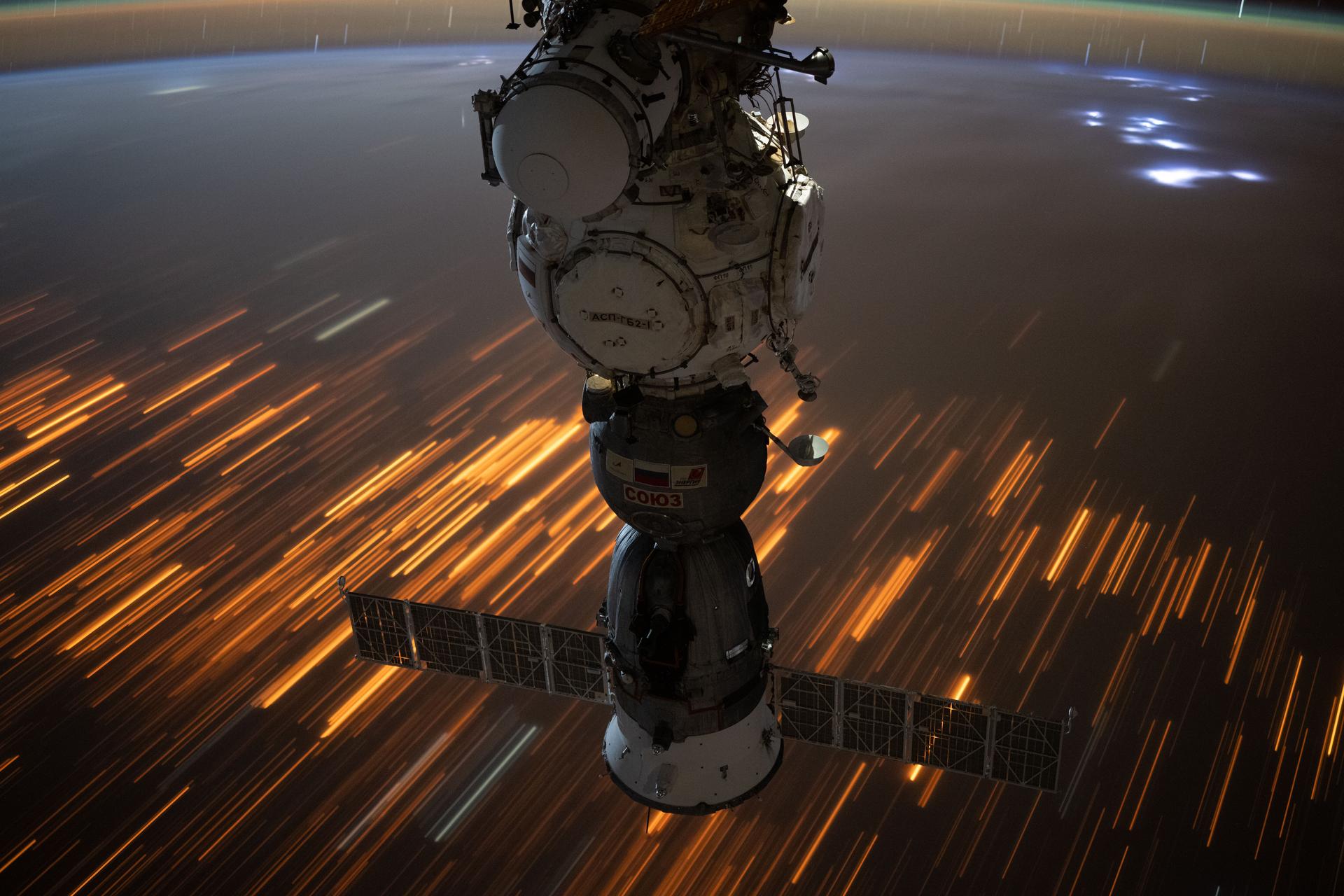Expedition 73 Studies How Space Affects the Brain and the Body
Maintaining sense of balance and protecting immunity in space were the top human research experiments aboard the International Space Station on Wednesday. The Expedition 73 crew members also practiced medical emergency procedures, continued more Earth observations, and finished packing a cargo craft.
NASA Flight Engineers Jonny Kim and Zena Cardman joined each other in the Columbus laboratory module and explored how weightlessness affects the central vestibular system, the part of the brain that processes balance and spatial orientation. Kim, with real-time assistance from doctors on the ground, operated the computer hardware and aided Cardman as she wore virtual reality goggles while responding to digital stimuli helping researchers understand how she is adapting to life in microgravity.
Flight Engineer Kimiya Yui of JAXA (Japan Aerospace Exploration Agency) completed his cellular immunity research removing his blood samples stowed overnight from a research incubator, spinning them in a centrifuge, and preserving them in a science freezer for later analysis. The Immunity Assay study tests an astronaut’s blood and saliva samples for space-caused conditions, helps doctors understand how living in space affects cellular immunity, and may improve crew health monitoring.
NASA Flight Engineer Mike Fincke spent most of his day on lab maintenance first inspecting hatch seals on the Columbus and Kibo lab modules. Next, he checked components and configured the Tranquility module’s advanced resistive exercise device, equipment that mimics free weights on Earth, for an investigation measuring the muscle forces and bone stresses an astronaut experiences when working out in space. Fincke also took a short computerized test measuring how microgravity is affecting his cognition, or reasoning, decision making, and visual tracking skills.
At the end of his shift, Fincke joined Kimiya, Cardman, and Roscosmos Flight Engineer Oleg Platonov and conducted an emergency drill aboard the orbital outpost. The quartet reviewed emergency procedures, practiced cardiopulmonary resuscitation, or CPR, deployed medical gear, then discussed crew communications and care coordination.
Platonov also continued his Earth observation duties pointing his camera out a space station window and photographing the effects of natural and manmade catastrophes. Next, he activated multispectral imaging hardware to automatically photograph Earth landmarks during the crew’s overnight sleep shift.
Station Commander Sergey Ryzhikov and Roscosmos Flight Engineer Alexey Zubritsky finished packing the Progress 91 cargo craft with trash and outdated gear on Wednesday. Ryzhikov closed the hatch on the resupply ship docked to Zvezda‘s rear port and performed the standard leak and pressure checks before its departure in September. Zubritsky earlier jogged on the Zvezda service module’s treadmill for a regularly scheduled fitness evaluation.
Learn more about station activities by following the space station blog, @space_station on X, as well as the ISS Facebook and ISS Instagram accounts.
Get the latest from NASA delivered every week. Subscribe here.
Powered by WPeMatico
Mark A. Garcia



